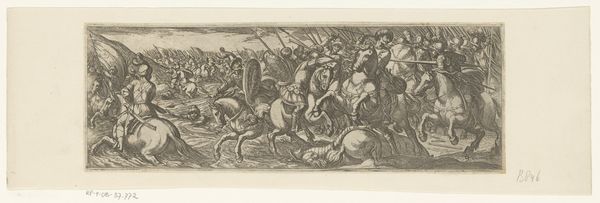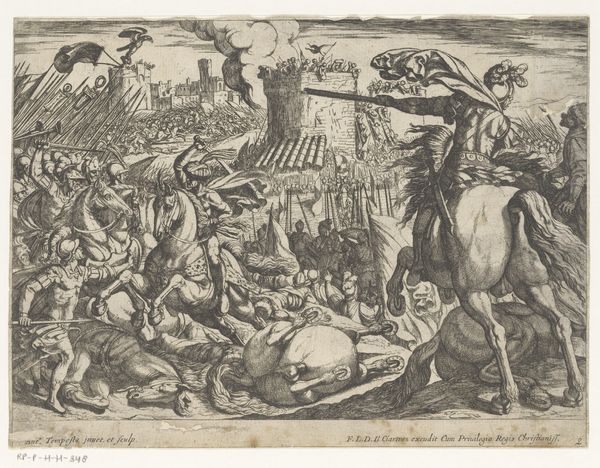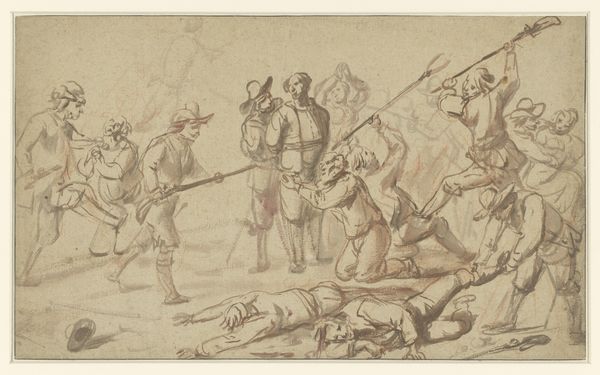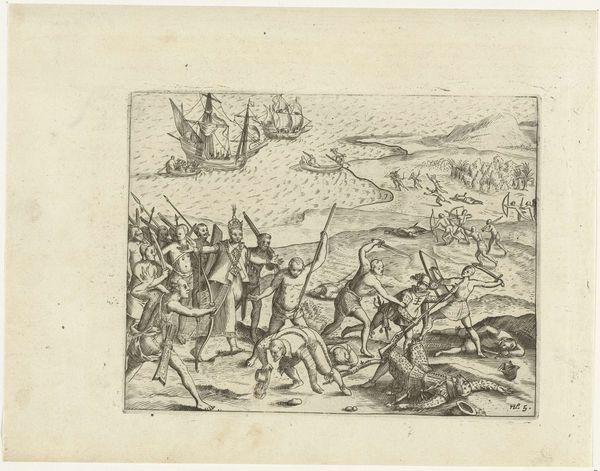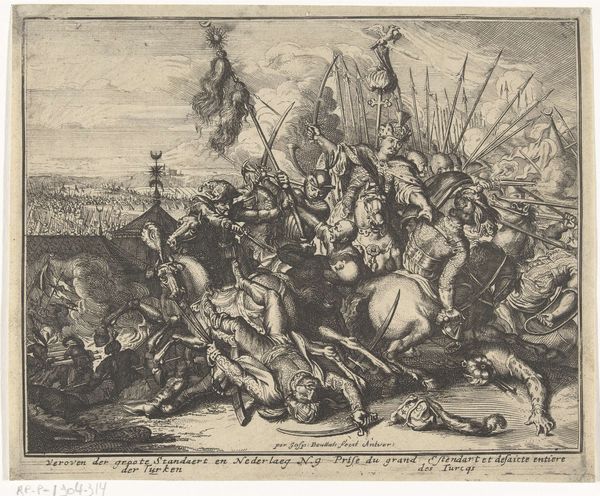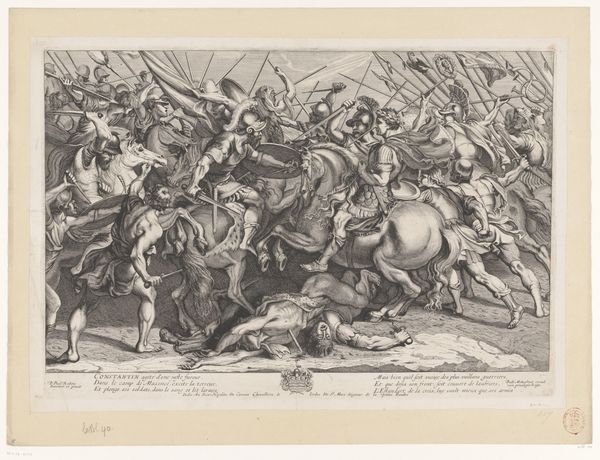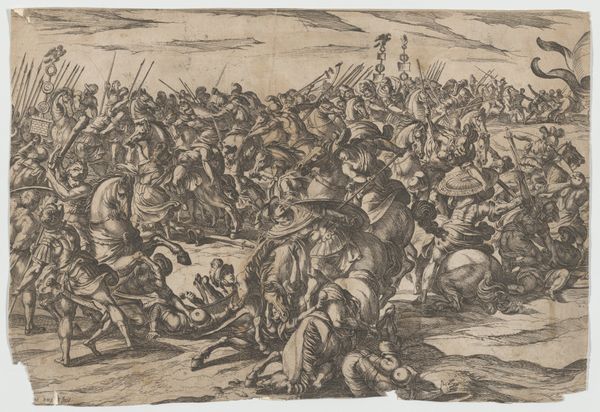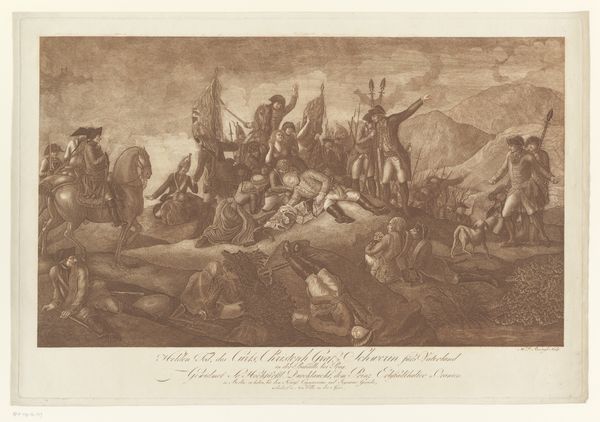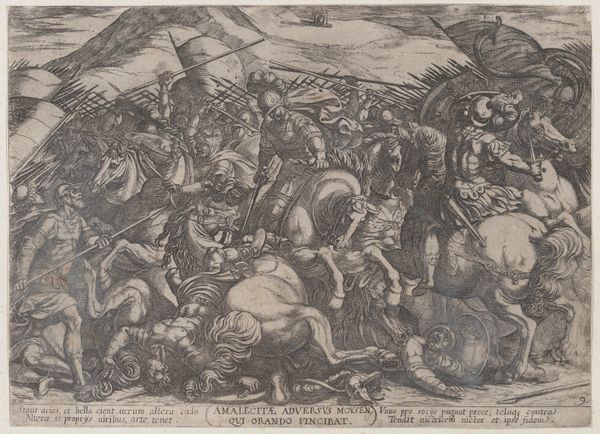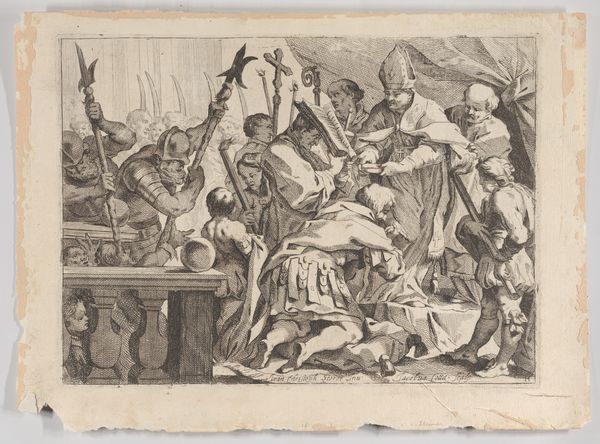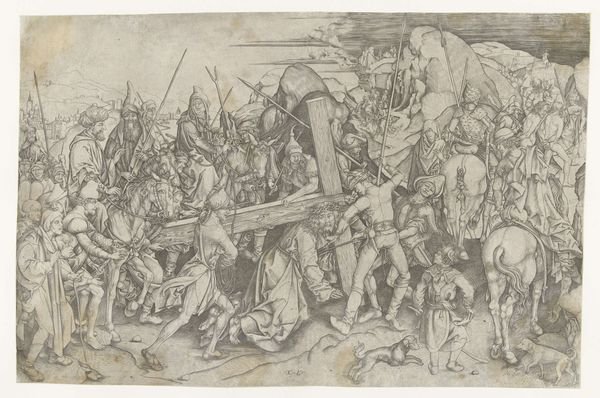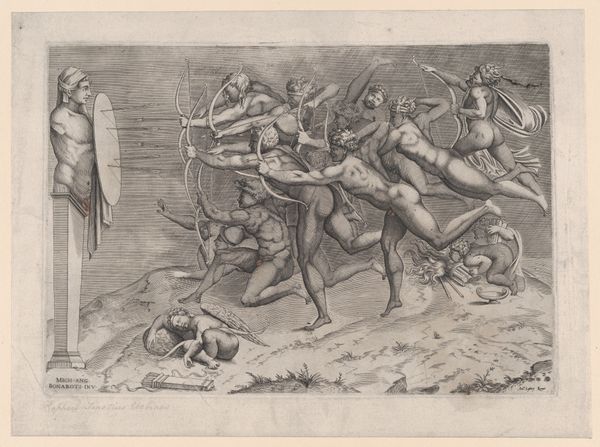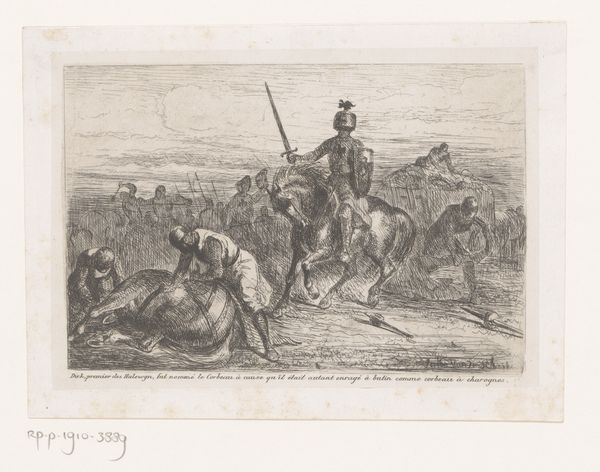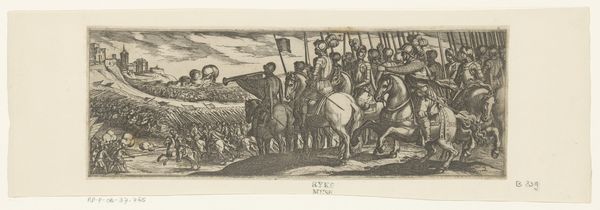
print, intaglio, engraving
#
narrative-art
#
baroque
#
pen drawing
# print
#
intaglio
#
figuration
#
history-painting
#
engraving
Dimensions: height 96 mm, width 270 mm
Copyright: Rijks Museum: Open Domain
Editor: This print, "Overwinnende soldaten stelen de bezittingen van de doden," made around 1599 by Antonio Tempesta, shows soldiers amidst a chaotic battle scene. It's unsettling, really. So much looting happening over bodies... What do you see in this work? Curator: I see a brutal depiction of power dynamics and the spoils of war. Tempesta isn't just showing us a battle; he's exposing the ugly side of victory – the exploitation and dehumanization that follow armed conflict. Consider the context of its creation; the late 16th century was a time of intense religious and political strife. This image speaks volumes about the systemic violence perpetuated by those in power. What kind of narratives are being left out? Editor: What do you mean by that, "narratives being left out"? Curator: Think about whose voices aren't represented here. Who documents the stories of the plundered, the mourning families, the displaced? Whose perspective dictates how "history" remembers conflict and so-called victory? We need to examine the ethical implications of how images like this can glorify conquest without acknowledging the suffering of those impacted. Editor: So, it's more than just a historical image. It's a commentary on who gets to tell the story. Curator: Exactly! By understanding its social and historical context, we can recognize how power operates, perpetuates itself, and, more importantly, what resistance might look like, even centuries later. Editor: That really changes how I see it. It's not just a historical battle scene; it's a statement on power and representation. Curator: Indeed, by engaging with such complex and deeply embedded biases in art history, we become more conscious and questioning viewers.
Comments
No comments
Be the first to comment and join the conversation on the ultimate creative platform.
